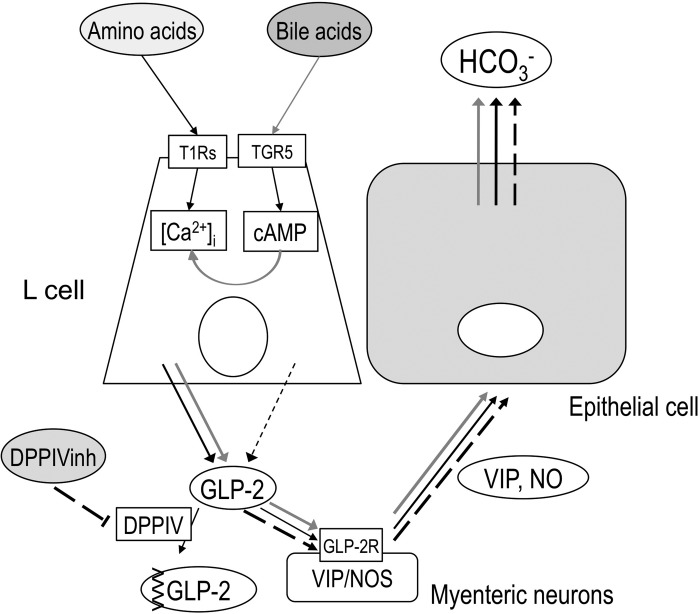Fig. 6.
Proposed mechanisms of T1Rs- and TGR5-mediated GLP-2 release and HCO3− secretion. Luminal amino acid may activate T1Rs on L cells, releasing GLP-2 via raising intracellular Ca2+ concentration ([Ca2+]i), followed by activation of GLP-2 receptors (GLP-2R) on myenteric neurons containing VIP or NO synthase (NOS) (Ref. 14), increasing VIP and NO release (Ref. 39), and then increasing HCO3− secretion (black arrows). Luminal bile acids may activate TGR5 on L cells, increasing cAMP, but have little effect on GLP-2 release (black dashed arrow), whereas TGR5 activation may amplify the effect of amino acid-T1Rs-[Ca2+]i pathway, then enhance GLP-2 release, resulting the enhanced HCO3− secretion (gray arrows). DPPIV inhibition inhibits GLP-2 degradation, enhancing the effect of GLP-2 on HCO3− secretion (long dashed arrows).

